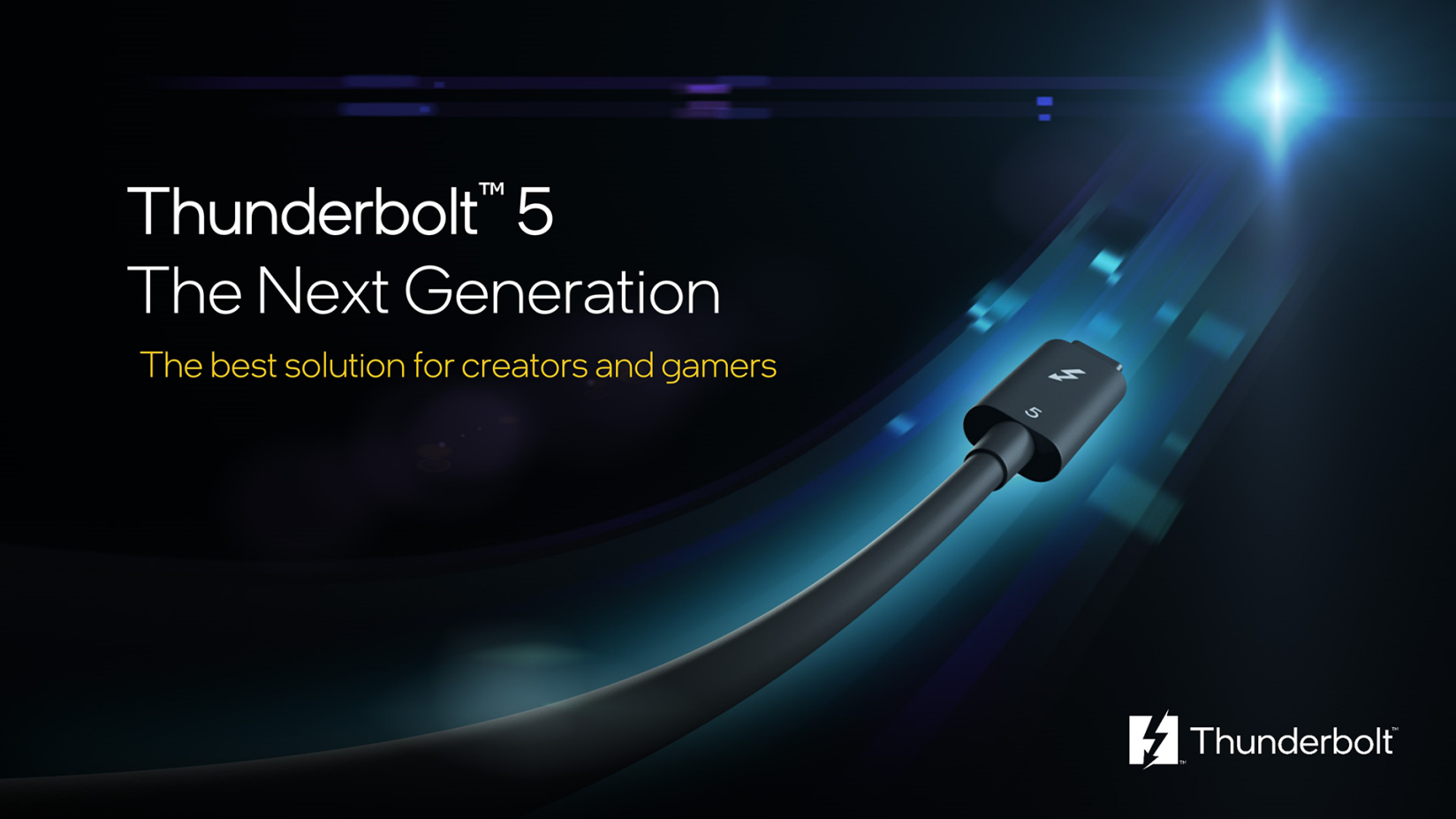Apple could be the big winner of Intel’s Thunderbolt 5 announcement - here’s why
External GPU I hear you say? There’s a solution that could work

Intel has announced Thunderbolt 5 connectivity will be available in 2024 on Windows-based PCs, most likely those equipped with Core and Xeon processors rather than AMD’s Ryzen and Threadripper ones. But the real winner in this announcement could be Apple.
It’s easy to forget that the iPhone maker is the company behind Thunderbolt, and there are more Thunderbolt ports on Mac computers than on any other platforms.
Remember that Apple first introduced the original Thunderbolt back in February 2011 and has been faithful to the technology every since. All recent Apple computers have at least one Thunderbolt 4 port with some - like the MacBook Air - sporting Thunderbolt ports only.
One of the most exciting use cases Thunderbolt 5 introduces is the ability to use an external GPU (eGPU) thanks to 120Gbps bi-directional bandwidth available. Now while an external GPU cannot and will not replace an internal one, it can complement it quite nicely.
We can’t predict what Apple’s next move is when it comes to support for eGPU but the new iteration of Thunderbolt gives proponents of this theory, additional ammo. Nvidia and AMD relentlessly deliver new generations of GPU every year, enabling Mac users to reach new levels of graphic performance.
There’s also the fact that support for eGPU could encourage data scientists and developers to use Mac with GPU accelerators like the Nvidia H100 or the AMD Instinct MI series for AI training and inference.
But there's a catch
It won’t be easy though; the current Apple Silicon is doesn’t have native support for eGPU. As Appleinsider pointed out in an excellent exposé back in 2022, two critical things are lacking: the cards lack Apple Silicon drivers, and the ability to address GPUs with a discrete memory pool simply doesn't exist in macOS for Apple Silicon.
Sign up to the TechRadar Pro newsletter to get all the top news, opinion, features and guidance your business needs to succeed!
The first one can be resolved by the vendors while the second one is resolutely in Apple’s camp; its engineers can do it if this fits within the broader strategy of the company. The latest Geekbench Metal benchmark, which looks at the GPU performance on Apple’s platform, shows that the M2 Ultra has closed the gap with the AMD Radeon RX 6900XT, which was launched almost three years ago.
The M3 Ultra is likely to surpass the card which remains the fastest discrete GPU available on Mac but will that be enough to keep demanding professional happy? The jury is out there. As Matt Bach from Puget Systems told TechRadar Pro back in June, the Mac Pro does not support additional GPUs and therefore the system cannot be upgraded to a faster render, and cannot benefit from having multiple GPUs in the same system.
Previous Intel-based Mac Pro systems allowed for multiple GPUs giving artists ways to improve their render times. This is unfortunate as many of these 3D applications have been putting in a lot of effort to get their renderers onto OSX, but Apple has chosen to step away from GPU support. Support for external GPU on Apple’s fastest silicon could be a game changer for them.
More from TechRadar Pro

Désiré has been musing and writing about technology during a career spanning four decades. He dabbled in website builders and web hosting when DHTML and frames were in vogue and started narrating about the impact of technology on society just before the start of the Y2K hysteria at the turn of the last millennium.